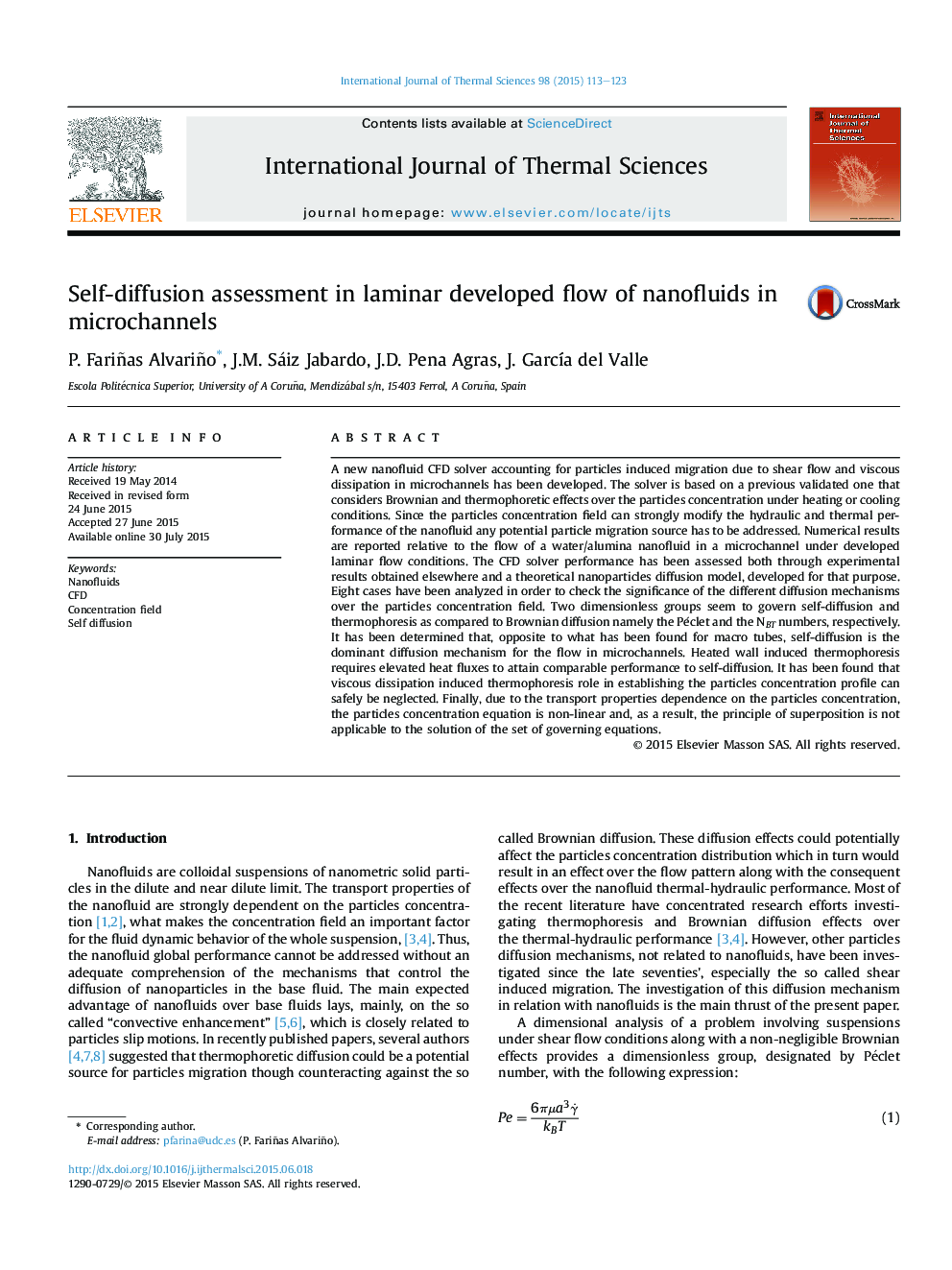| Article ID | Journal | Published Year | Pages | File Type |
|---|---|---|---|---|
| 667980 | International Journal of Thermal Sciences | 2015 | 11 Pages |
•Self diffusion can play a non-negligible role in particles migration in micro channels.•Thermophoresis might be negligibly small in micro channels.•Rayleigh dissipation can safely be neglected as a potential mechanism for particles diffusion in micro channels.•Self diffusion, Brownian, and thermophoresis diffusion mechanisms cannot be superimposed in the determination of the particles concentration field.
A new nanofluid CFD solver accounting for particles induced migration due to shear flow and viscous dissipation in microchannels has been developed. The solver is based on a previous validated one that considers Brownian and thermophoretic effects over the particles concentration under heating or cooling conditions. Since the particles concentration field can strongly modify the hydraulic and thermal performance of the nanofluid any potential particle migration source has to be addressed. Numerical results are reported relative to the flow of a water/alumina nanofluid in a microchannel under developed laminar flow conditions. The CFD solver performance has been assessed both through experimental results obtained elsewhere and a theoretical nanoparticles diffusion model, developed for that purpose. Eight cases have been analyzed in order to check the significance of the different diffusion mechanisms over the particles concentration field. Two dimensionless groups seem to govern self-diffusion and thermophoresis as compared to Brownian diffusion namely the Péclet and the NBT numbers, respectively. It has been determined that, opposite to what has been found for macro tubes, self-diffusion is the dominant diffusion mechanism for the flow in microchannels. Heated wall induced thermophoresis requires elevated heat fluxes to attain comparable performance to self-diffusion. It has been found that viscous dissipation induced thermophoresis role in establishing the particles concentration profile can safely be neglected. Finally, due to the transport properties dependence on the particles concentration, the particles concentration equation is non-linear and, as a result, the principle of superposition is not applicable to the solution of the set of governing equations.
